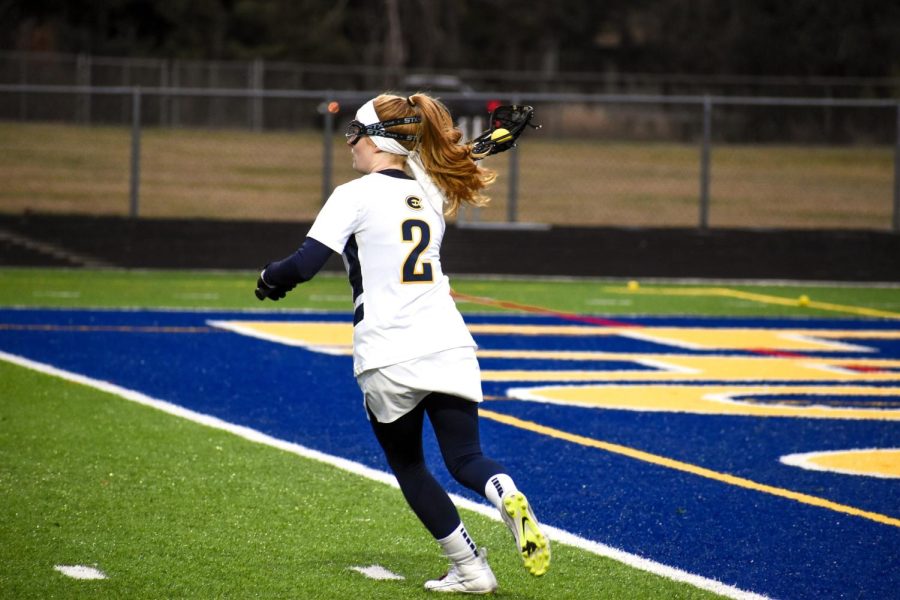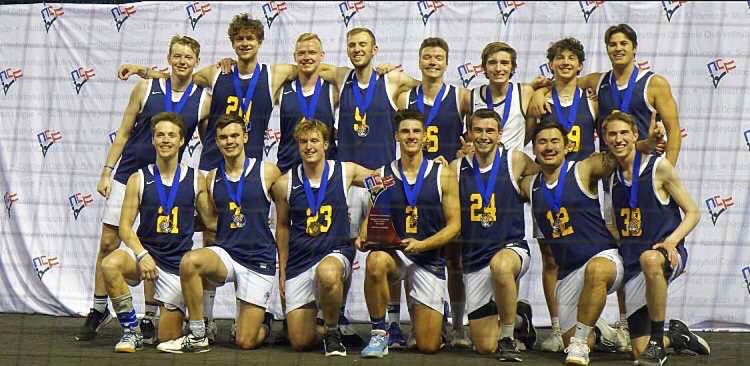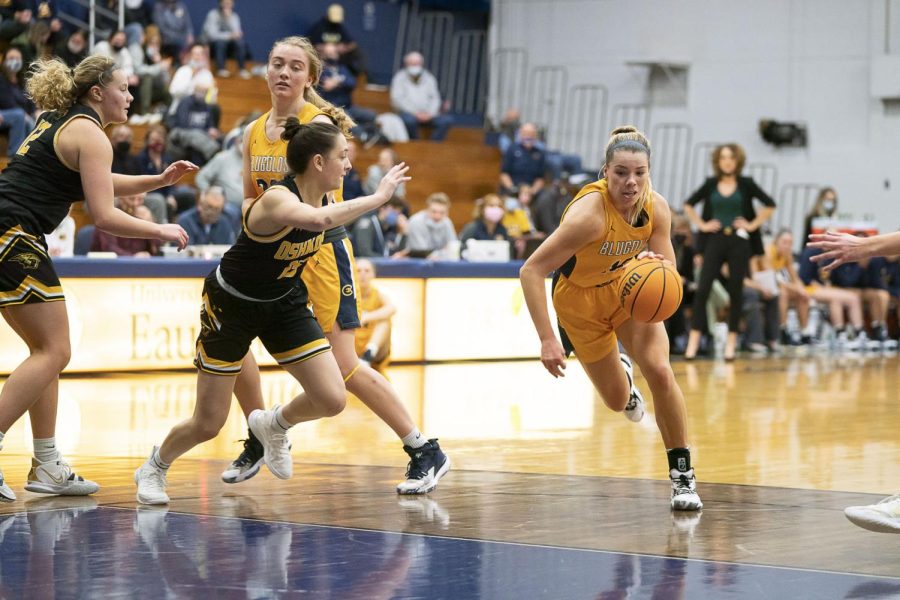A three-week sojourn in the Peruvian rainforest seems like an experience best left to explorers and outdoorsmen. But for two UW-Eau Claire honors students, that trip was how they spent their winter break.
Christine Manwiller, a junior bachelor of fine arts student with an emphasis in painting and drawing, and Shauna Stoeger, a senior double-majoring in psychology and Spanish, traveled to northern Peru to study the interaction of the local culture and the environment.
“I wanted to study abroad, so I’d already been looking for opportunities,” Manwiller said, “but going for a whole semester wouldn’t have worked with my schedule and would have put me back.”
The program
Manwiller and Stoeger were two of 12 honors students chosen nationally to participate in the Honors Amazon Winterim 2012 program, called “Living on the Edge of a Rainforest Frontier.” The program was organized by the National Collegiate Honors Council and the honors college at Florida International University.
The program was based in Iquitos, Peru, which is the largest city in the northern Peruvian rainforest. However, the group also spent part of their time at the Madre Selva Biological Station, 90 miles east of the city.
The station is run by Project Amazonas, a Peruvian-American non-profit organization that focuses on humanitarian, educational, research and conservation work in the Peruvian Amazon.
During the trip, the Manwiller and Stoeger enrolled in two three-credit courses — “Living Off the Rainforest: Biodiversity, Sustenance and Sustainability” and “Culture, Identity and the Environment in the Peruvian Amazon” — to learn about the local environment and culture and how they interact.
Each student was required to complete an independent study research project related to their major and each of the classes.
Devon Graham, president of Project Amazonas and professor at Florida International University, said that even though this was the inaugural year of the trip, the group had few problems and gelled immediately.
“It was pretty amazing,” he said. “By day two, it seemed as though everyone had gone to kindergarten together.”
Each of the students was generally left to complete their class projects on their own, Graham said, though he didn’t think that inhibited them at all.
“Even though it was independent study,” he said, “the students collaborated a lot, particularly in terms of translating. That was one of the really strong points of the program.”
Stoeger also thought the independent study worked in the program’s favor.
“The independent study really helped us to not be just a big group of Americans all going out together,” she said. “(The professors) really encouraged us to go and explore on our own and not depend on other people to show us.”
Graham said having both Stoeger and Manwiller adding to the classes was a great experience.
“They definitely contributed to the overall success of the program,” he said. “They were both full participants in every sense of the word.”
Art and the environment: Manwiller’s study
Manwiller, who wants to be an art conservationist, studied local artists and their relationship to their vendors and the environment.
For the culture-based class, she interviewed these artists — some who made art exclusively to sell to tourists, some who were students, some who were famous locally — to understand the differences between Peruvian and American artists.
She also worked in the studio of a painter named Juan Montes, who showed her how to work with chan chama paper, a product made from the chan chama tree, which grows in the area around Iquitos.
“Working with him was probably the highlight of my trip,” Manwiller said, adding that getting the chance to use indigenous materials was something she would rarely be able to do at Eau Claire.
The second part of Manwiller’s research project, which coincided with the science-based class and the group’s time at the Madre Selva Biological Station, tied together the artworks and their possible effect on the surrounding environment.
“I wanted to focus on art, still,” she said, “so I researched more of the handicrafts that they produce for tourists and the effects of the harvesting of the materials on the environment.”
So far, Manwiller said, she hasn’t found a correlation between the amount of materials harvested and any damage to the environment. She found that there simply wasn’t enough harvesting occurring yet for it to be detrimental.
Based on her interviews, she concluded that the artists’ only source of revenue was tourists, and there weren’t enough of them to need mass production of local art.
“There isn’t any support, really, from the community for art,” Manwiller said, “so I interviewed a lot of artists who sell only to tourists.”
Manwiller said that because of this trip, she has become more interested in the production and study of non-Western art.
Hunting the endangered: Stoeger’s study
Stoeger, who wants to get a degree in criminal psychology and work in a mental health field with Latinos, focused her independent study project on the hunting and selling of endangered species in local markets.
During their time in Iquitos, she counted the number of goods from endangered species for sale — including both finished products and live animals. She then compared them to numbers from a similar study one of her professors did in 2009 to see if there was a change in the total number of products. She found that though the total amount of merchandise had increased, the number of species from which they came
had decreased.
“They were exploiting a smaller group of animals but getting more out of them,” Stoeger said, “most likely because there are now more animals on the red list.”
However, Stoeger said, the more interesting part of her study came in the interviews she conducted with vendors and hunters of endangered species.
“I found that nobody thought (hunting endangered species) was illegal,” she said. “Not even the zoo workers, none of the vendors, none of people in the indigenous communities. Nobody even knew what the law was or perceived the law enforcement as a threat.”
What’s more, hunters and vendors blame each other for the continuation of the problem, Stoeger said. It isn’t as clear-cut as she thought it would be going in to the project.
“I thought it would be really easy to label them as criminals,” she said, “but now I’m like, ‘They’re not criminals, it’s part of their culture.’”
The impact
Both Stoeger and Manwiller said they went in to the experience trying to avoid any preconceived notions about the local culture and people.
“I had absolutely no idea what to expect,” Manwiller said, “and I was really nervous because I had never traveled before.”
Stoeger had previously spent a semester abroad in Costa Rica and Nicaragua, where she stayed with host families. Because this trip was much shorter and they didn’t stay with locals, she didn’t think it would be as affecting.
“I didn’t expect to get such a life-changing experience out of this trip, but then I did,” she said. “So now I’m back, and I’m like, ‘Crap, now I have to go through reverse culture shock again.’”
What made the experience so welcoming, Stoeger said, was the openness of the people.
“You couldn’t walk 20 feet without somebody striking up a conversation,”
Stoeger said, “so you really got to know the people you were working with.”
Stoeger attributed the strong sense of community in part to the poverty in the area. Families simply don’t have the material possessions to worry about, so they focus more on taking care of each other.
“When you’re actually immersed in the culture of an impoverished community,” she said, “it’s so beautiful because people just do let you into their community so readily.”
Manwiller agreed and added that the lack of tourist attractions made her more attentive to the local culture and people.
“You have to focus on the people because there’s just nothing else to see,” she said.
Manwiller, who before this had wanted to study abroad in Italy, said the experience changed her ideas about the poverty and impoverished areas.
“I kind of went in expecting to feel sorry for people or be ashamed of being an American,” Manwiller said, “but at the end of the trip I almost felt like I wished I could live there, mostly because of the community. They just live more.”





